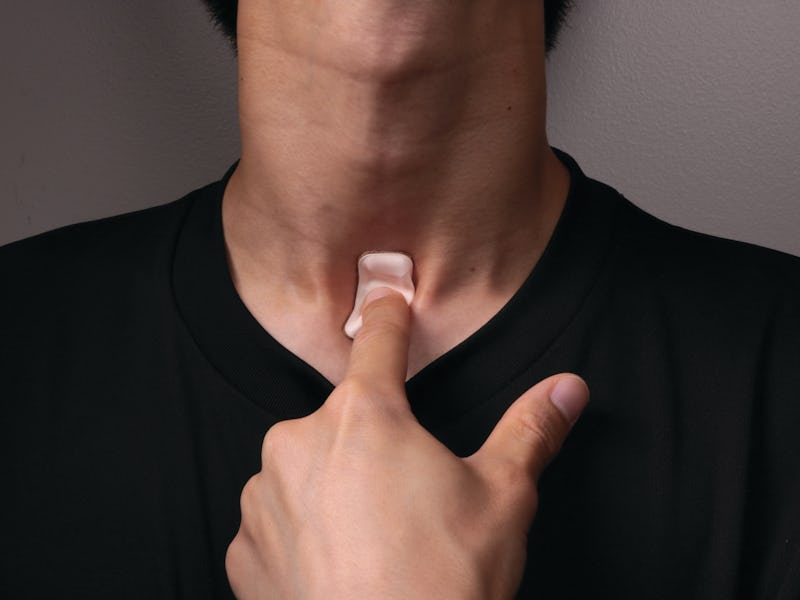Tech
This sensor sticks to your throat and monitors for coronavirus
The stamp-sized wearable allows physicians to continuously monitor the progression of the illness.

Researchers at Northwestern University have developed a small, wearable patch that sticks on the throat 24/7 and continuously monitors for symptoms of coronavirus in those suspected to have it, or monitors changes in those that do have it. The patch measures vitals including coughing and breathing patterns, heart rate, and body temperature. The data is collected and wirelessly delivered to a cloud server where it's analyzed using an algorithm that's constantly being updated to better allow doctors to track the progression of the disease.
The 'rona is sneaky — The team behind the patch explains that many patients with coronavirus see their symptoms fully disappear before they suddenly begin to deteriorate. Other patients recover and test negative, only to test positive again later. Continuous monitoring can help physicians intervene at the earliest signs of trouble, protecting not only infected patients but also those around them who might contract COVID-19 otherwise.
The patch could also provide peace of mind to frontline medical workers, many of whom put themselves at risk of exposure daily. The patch can be sterilized and reused, so it's also cost-effective.
Twenty-five affected individuals have already been using the patch for two weeks, generating more than one terabyte of data. The patch itself is quite small, about the size of a postage stamp. It's also apparently not itchy or irritating. “When you first put it on, you can feel it just because it’s new and different,” said one early wearer. “But after you have worn it for a while, you don’t even notice it.”
Traditional monitoring is inefficient — The unknowns of coronavirus are why researchers feel such continuous monitoring is key. It can be very difficult to differentiate between coronavirus and common seasonal allergies before it's too late and the potentially fatal disease has been spread to others. Traditional monitoring requires visiting an actual in-person medical facility, whereas with the patch a physician could be constantly reviewing charts containing days and weeks worth of data remotely.
If there are qualifying characteristics and patterns to respiratory activity that might be associate with coronavirus, researchers want to know. It might help them save lives, both patients' lives and those of their loved ones. Combine that sort of data with contact tracing and broad-based testing, and it might be possible to thwart the spread of the virus.
The team behind the project is continuing to refine its algorithms based on the flow of data they're receiving from existing wearers, and have begun deploying the technology to medical facilities in the U.S. that have requested access.